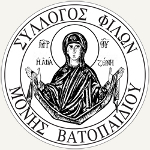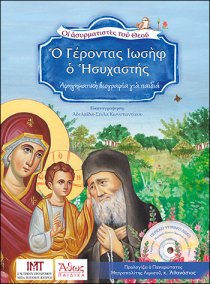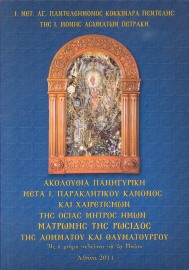«And as Moses lifted up the serpent in the wilderness, even so must the Son of man be lifted up: That whosoever believeth in him should not perish, but have eternal life. For God so loved the world, that he gave his only begotten Son, that whosoever believeth in him should not perish, but have everlasting life. For God sent not his Son into the world to condemn the world; but that the world through him might be saved. He that believeth on him is not condemned: but he that believeth not is condemned already, because he hath not believed in the name of the only begotten Son of God. And this is the condemnation, that light is come into the world, and men loved darkness rather than light, because their deeds were evil. For every one that doeth evil hateth the light, neither cometh to the light, lest his deeds should be reproved. But he that doeth truth cometh to the light, that his deeds may be made manifest, that they are wrought in God.»
What Christ Accomplished on the Cross
22 Απριλίου, 2011 — vatopaidifriend3by Hieromonk Damascene
A talk delivered at the Annual Lenten Clergy Confession of the New Gracanica Metropolitanate and the Western American Diocese of the Serbian Orthodox Church, Jackson, California, March 4/17, 2004.
The topic of today’s talk—what Christ accomplished on the Cross—is of course a prime subject of contemplation during the Lenten season, as we prepare to prayerfully commemorate Christ’s passion, death, and the inevitable consequence of His death: His holy Resurrection. As we call to mind and repent of our sins during the Holy Fast, we also call to mind that which has saved us from the eternal consequences of sin. We call to mind Christ’s life-creating death on the Cross, which He underwent for the salvation of each one of us.
The Orthodox dogma of our redemption—which includes the doctrines concerning Christ’s incarnation, death and Resurrection—is the chief dogma of our Faith, together with the dogma of the Holy Trinity. I have been especially contemplating and reading Patristic writings on this subject for a few years now. It is a vast subject. In this lecture I will try to outline its main points in a linear and chronological fashion. I will speak about the state of man before the Fall and after the Fall, and then speak about how Christ saved us from the consequences of the Fall through His incarnation, death and Resurrection. Finally, I will summarize all the present and future accomplishments of Christ’s redemptive work. Διαβάστε τη συνέχεια του άρθρου »
Why study the signs of the times? (Fr. Seraphim Rose) Part 1
24 Νοεμβρίου, 2010 — vatopaidifriend3In the following talk, Fr. Seraphim speaks to us from almost twenty years ago, and yet his words are quite relevant to our times as we approach the end of the second millennium. Although some of the individual examples he gives are now dated, there are now even more extreme examples of the same phenomena of which he speaks. As always, he humbles his understanding before the holy Scriptures and their interpretation by the Orthodox Holy Fathers, and thus his teaching about the times remains timeless, free of the intellectual fashions and prejudices of this world. As time goes on, the Orthodox world-view from which he received his wisdom will become ever more necessary for the spiritual survival of true Christians. Διαβάστε τη συνέχεια του άρθρου »
Hesychia – «Watchful, Inner Stillness in Prayer»
30 Απριλίου, 2010 — vatopaidifriend3The monks of the Holy Mountain teach us that through ascetic practices we are able to perfect quietude of body and mind and to arrive at a vision of the Uncreated Light of the Godhead. The use of our prayer rope together with the Jesus prayer «Lord Jesus Christ, Son of God, have mercy on me a sinner» is a means to achieve peace and sorrowful joy within the Christian Life. Διαβάστε τη συνέχεια του άρθρου »
For God so loved the world… (John 3:14-21)
2 Απριλίου, 2010 — vatopaidifriend3«And as Moses lifted up the serpent in the wilderness, even so must the Son of man be lifted up: That whosoever believeth in him should not perish, but have eternal life. For God so loved the world, that he gave his only begotten Son, that whosoever believeth in him should not perish, but have everlasting life. For God sent not his Son into the world to condemn the world; but that the world through him might be saved. He that believeth on him is not condemned: but he that believeth not is condemned already, because he hath not believed in the name of the only begotten Son of God. And this is the condemnation, that light is come into the world, and men loved darkness rather than light, because their deeds were evil. For every one that doeth evil hateth the light, neither cometh to the light, lest his deeds should be reproved. But he that doeth truth cometh to the light, that his deeds may be made manifest, that they are wrought in God.»
Great and Holy Thursday:The Institution of the Eucharist
1 Απριλίου, 2010 — vatopaidifriend3On Thursday of Holy Week four events are commemorated: the washing of the disciples’ feet, the institution of the Sacrament of the Holy Eucharist at the Last Supper, the agony in the garden of Gethsemane, and the betrayal of Christ by Judas.
The Institution of the Eucharist
At the Mystical Supper in the Upper Room Jesus gave a radically new meaning to the food and drink of the sacred meal. He identified Himself with the bread and wine: «Take, eat; this is my Body. Drink of it all of you; for this is my Blood of the New Covenant» (Matthew 26:26-28). Διαβάστε τη συνέχεια του άρθρου »
How old is the Οrthodox faith?
23 Φεβρουαρίου, 2010 — vatopaidifriend3
Christ, the Good Shepherd. Wall-painting at the ancient church in Dura-Europos (Mesopotamia). 235 AD the latest. At the lower left we see Adam and Eve.
If you are a Lutheran, your religion was founded by Martin Luther, an ex-monk of the Catholic Church, in the year 1517. If you belong to the Church of England, your religion was founded by King Henry VIII in the year 1534 because the Pope would not grant him a divorce with the right to re-marry. If you are a Presbyterian, your religion was founded by John Knox in Scotland in the year 1560. If you are a Congregationalist, your religion was originated by Robert Brown in Holland in 1582. If you are Protestant Episcopalian, your religion was an offshoot of the Church of England, founded by Samuel Senbury in the American colonies in the 17th century. If you are a Baptist, you owe the tenets of your religion to John Smyth, who launched it in Amsterdam in 1606. If you are of the Dutch Reformed Church, you recognize Michelis Jones as founder because he originated your religion in New York in 1628. If you are a Methodist, your religion was founded by John and Charles Wesley in England in 1774. If you are a Mormon (Latter Day Saints), Joseph Smith started your religion in Palmyra, New York, in 1829. If you worship with the Salvation Army, your sect began with William Booth in London in 1865. If you are Christian Scientist, you look to 1879 as the year in which your religion was born and to Mary Baker Eddy as its founder. Διαβάστε τη συνέχεια του άρθρου »








































